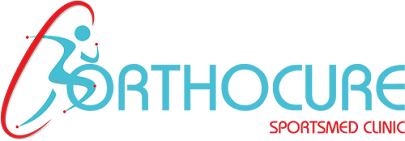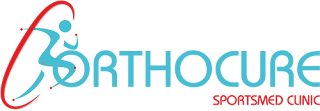Stress Fracture Assessment & Treatment - Sports Injury & Medicine Clinic in Dubai
Stress Fracture Assessment & Treatment
Stress Fracture Incidence
Stress fractures of bone are a common injury seen in all types of sport and are debilitating injuries that can hurt a lot, preventing sports participation and maximum performance. The media often mentions stress fractures when sportspeople are unavailable for their event/sport but there is usually a vague sense of no clear return to play when these injuries are discussed. No moment of injury is usually seen either which tends to add the mystique and against that typically accompanies a stress fracture diagnosis. This lack of injury moment or trauma adds to the distress of the athlete too when they are advised to not play for many weeks despite not feeling anything sinister has occurred.
Stress fractures can affect almost any bone in the body depending on the type of activity you perform. Lower limb stress injuries are the most common with tibia stress fractures and foot stress fractures being the most common in runners and other impact sports. It is not uncommon for gymnasts and dancers to develop stress injuries of the upper limb and ribs. Dancers, gymnasts, and cricket bowlers also commonly develop stress injuries in the spine (pars stress fractures) due to the unique movements associated with their sports.
Conor McGregor Stress Fracture
Typically, stress fractures evolve slowly and are noticed as a gradual increase in localized pain, usually over a bony area such as the middle of the shin bone (tibia). The pain is usually brought on by weight-bearing or impact activity. The pain is in response to the bone’s inability to tolerate the force going through it. Hence the pain is worse when exercising and usually much improved when resting the affected area. However, 50% of stress injuries can cause night pain.
Typical examination findings are a localized area of tenderness on a bone. This may be associated with a small lump and swelling. The pain is often worse with recurrent hopping.
Although most bone stress injuries show themselves as a progressive increase in pain, the concern is a sudden failure of the bone. Bone failure is most likely to be seen if the pain is ignored and usually requires surgical intervention and a prolonged recovery period. Most recently, sudden bone failure was seen in the UFC bout between Conor McGregor and Dustin Poirier were a reported underlying stress fracture resulted in a complete tibial fracture.
What is a Stress Fracture?
Bone stress injuries are an accumulation of bone fatigue that results in a loss of structural and functional integrity. Every time we load our bone we cause microdamage to the collagen fibers and bone matrix. This stimulates bone cells known as osteoblasts, osteoclasts, and osteocytes to respond to this microdamage. Typically after exercise, our body mops up this ‘microdamage’ and strengthens the bone and remodels so the bone can tolerate MORE load in the future. This process takes a period of time to occur. Higher training intensity, particularly impact training, results in more microdamage than lower training intensity. If you participate in regular high-intensity training without allowing adequate time for bone repair and remodeling, the microdamage never fully recovers and slowly accumulates.
Normal Bone Response To Load
As microdamage accumulates, the bone can develop signs of further injury known as microcracks. These are more definable issues in the structure of the bone. These microcracks aren’t visible like a traumatic fracture but are the early stages of a stress fracture. This phase is referred to as a bone stress injury. There are microfractures present but no visible crack on imaging. Bone is often symptomatic at this stage although it is possible to have signs of bone stress on MRI without pain.
Bone micro-cracks
Electron microscopy view of bone micro-cracks
The persistence of exercise allows microfractures to coalesce into macro fractures. Microfractures are visible on imaging techniques as cracks in the bone. These cracks can progress through the entire width of the bone with time and result in sudden decompensation of the bone as seen in McGregor’s leg in the above image.
Why Do Stress Fractures Happen?
The primary reason for a bone stress fracture to happen is training overload. As mentioned previously, the bone is exposed to recurrent bouts of exercise that cause more damage than the bone can recover from over a short period of time. So any changes in training volume, frequency, or intensity increase the odds of developing a stress injury. The largest risk though is increasing the amount of impact loading in your training program.
However, the development of stress injuries is usually multifactorial. These other factors need to be assessed and addressed in your recovery pathway.
Significant risk factors include:
CHANGES IN TRAINING SURFACE & FOOTWEAR
This can influence the amount of force that your bone is exposed too. Changing training surface or footwear can result in sudden changes of bone loading exposure (known as ground reaction forces) and increase microdamage accumulation.
POOR BONE HEALTH & BONE DENSITY
Healthy bonesBone health (mineral density, collagen organization, and quantity) is influenced by many factors.
Calcium Intake: Bone mineral is predominantly formed from calcium, therefore a lack of adequate calcium means bones do not have the necessary building blocks to build and maintain normal healthy bone. A common mistake is thinking a normal calcium blood test means calcium intake is adequate. In fact, the body protects blood calcium at all costs and will leach calcium out of the bones to maintain normal blood calcium. A normal blood calcium test doesn’t tell you much about your bone health in most cases.
Vitamin D Levels: Vitamin D plays a crucial role in how our body processes and absorbs calcium. 90% of our Vitamin D comes directly from sunlight. Low levels of Vitamin D increase the odds of poor bone health via its influence on calcium. Most blood tests suggest a Vitamin D level less than 50 nmol/L is low, but there is an increased incidence of bone stress injuries when levels are less than 75 nmol/L.
RELATIVE ENERGY DEFICIENCY SYNDROME (RED-S)
Having persistently lower energy intake (dietary consumption of calories) than the amount of energy expended (calories burnt off) results in inefficiencies in many of the systems that maintain normal body function. Energy is required for normal bone remodeling and turnover. Low energy slows this process resulting in ‘stale’ bone that can be injured more easily. Low energy also affects sex hormone production (estrogen and testosterone) and these hormones are anabolic to bone (promote growth and strength). If these hormones are not produced in adequate amounts, low bone mineral density and poor structure can result. This is a type of secondary osteopenia/osteoporosis.
BIOMECHANICS & STRENGTH
Most areas of bone stress occur at specific points where the load has been focussed. This focussing of load can be amplified by asymmetric biomechanics, abnormal movement patterns, and muscle strength weakness. Interestingly though, there is no association of pes planus (flat feet) and the development of stress injuries.
GROWTH SPORTS
During growth spurts, the bones grow faster than they can be mineralized. This results in a period of relative weakness (transient osteopenia). Some studies suggest that growing by more than 0.6cm per month correlates to an increase in injury risk of 63%. This is why it is common to see teenagers with bone stress injuries.
FEMALE GENDER
Due to differences in bone width, muscle strength, and hormonal influences as well as factors that are not understood, females have higher rates of stress injuries than males. In the military up to 17% of females develop bone stress injuries vs 6% of their male counterparts. These rates are higher in females with known alterations in their menstrual cycle. The normal menstrual cycle cannot be assessed in females using the oral contraceptive pill as the medication triggers menstruation regardless of the underlying physiology within the body. Taking the oral contraceptive pill does not compensate for having poor internal production of sex hormones.
OTHER
Several other factors influence vulnerability to bone stress injuries including your genetic risk (have your parents or siblings had any stress injuries?), parathyroid/thyroid hormone problems, smoking, excess alcohol consumption and other chronic illnesses.
Stress Fracture Diagnosis
Most stress fractures can be diagnosed clinically from the story you tell and the examination from the doctor. However, the prognosis (how long it will take to recover) of the stress fracture and contribution of other factors to the injury may require further assessment including;
MRI: Excellent at detecting early injuries and helps classify the degree of stress injury present
Dietary assessment
Blood tests including assessment of bone physiology and hormone status
Bone mineral density testing via DEXA scan
Stress Fracture Grading
Stress injuries exist on a continuum. The further down the continuum towards a macro fracture, the longer the recovery time is likely to be. Several grading systems have been proposed but essentially the key components are:
Grade 1: Asymptomatic bone edema (microfractures) without any fracture line
Grade 2: Symptomatic bone edema (microfractures) without any fracture line.
Grade 3: Bone edema with an undisplaced macro fracture
Grade 4: A displaced macro fracture (see Conor McGregor’s leg)
In general, lower-grade stress injuries tend to heal faster. Bone edema cannot be seen on an X-ray, CT scan, or MRI, so staging of early injuries needs an MRI or a bone scan. Bone scans are excellent diagnostic tools but expose patients to a moderate amount of radiation. Given MRI identifies stress injuries just as well as a bone scan, an MRI is the investigation of choice as there is no radiation with an MRI.
Grade 2 Foot Bone Stress Injury
Grade 2 Foot Bone Stress Injury
Grade 3 Tibial Bone Stress Injury
Grade 3 Tibial Bone Stress Injury
Stress Fracture Treatment
The primary treatment is to stop exposing your stress injury to force that triggers pain. If you still have pain with walking, then your bone is struggling to cope with walking and you will need to stay off your feet or go on crutches.
A walking boot is often prescribed but this does not necessarily reduce the force going through your bones. However, it will probably slow you down so the total force your bone is exposed to throughout a day will be less. There are some foot stress injuries that will respond well to a boot if the boot has a forefoot rocker, this allows you to offload the forefoot.
It is essential that any stress fracture is assessed by a health professional and preferably by a doctor. Certain stress fractures need specific treatment as they are at high risk of not healing. These high-risk stress fractures include:
5th metatarsal
Navicular (foot)
Anterior tibial
Neck of femur
Pelvic
Sacrum
Spinal (pars)
Return to sports programs are highly variable and need to be individualized. Any return to a sport program should be supervised by a health professional with experience in stress fracture management.
Stress Fracture Return To Sport Pathway
Possible Stress Fracture Return To Sport Pathway
Once you have been able to walk pain-free for over a week, you may be able to slowly return to some weight-bearing activity. There is no exact science to progressing your exercise but the underlying principle is that any activity should cause NO pain. Most people can return to alternate day training at approximately 30-50% of their pre-injury training volume once they have been walking pain-free for over a week. This training volume can be slowly increased week by week until a full return to sport is achieved. Any pain experienced normally means a period of rest before restarting at a slightly lower pain-free exercise volume again.
Maintaining aerobic fitness is possible during this period by substituting non-impact training for your impact training, this is known as cross-training. Good cross-training options include deep water running, swimming, elliptical trainer, cycling, and sometimes seated or lying resistance training.
Restoration of normal strength and correction where possible of abnormal biomechanics will form part of your complete treatment pathway. This is where a good relationship between your treating doctor and physiotherapist is essential.
Complete treatment of a stress fracture needs assessment by a doctor that specializes in musculoskeletal injuries such as a Sports & Exercise Medicine Physician. They will assess all of the previous risk factors mentioned and try and correct these. This is an often overlooked but essential part of treatment and the reason why many athletes have recurrent injuries.
There are some additional treatments that can aid recovery as well. There is some preliminary science suggesting supplementing with Vitamin D and calcium during the period of bone healing can help recovery even in the absence of any deficiencies.
Some stress fractures benefit from a pneumatic air brace such as tibial stress fractures. Fractures that have delayed healing may benefit from a bone stimulator treatment known as Low-Intensity Pulsed UltraSound (or LIPUS). There are also some medications that are being researched into their effect on speeding up bone stress injury healing including teriparatide and bisphosphonates.
How Do You Prevent Stress Fractures
As with all injuries, prevention is better than cure. The prevention of these injuries comes back to our previous risk factors. To minimize your chance of a new or recurrent stress injury, my recommendation would be:




Comments
Post a Comment